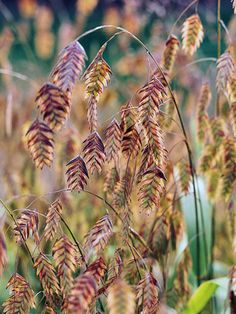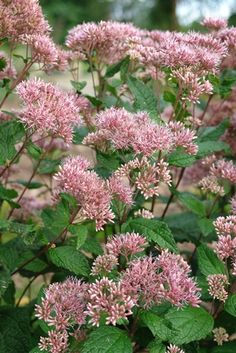It’s summer and the living is not so easy right now for most of us farmer types. The heat and the general exhaustion of the season will be starting to catch up to us. But it’s important to keep your eye on the ball and still be preparing for success in the seasons to come, not just worrying about today’s tasks. Balancing the present with the future is one of the greatest struggles in farming. Loading up on perennials is one of the keys to successful long-term flower farming.
We plant all our perennials in woven black fabric for easier maintenance and moisture retention. Once they are established, we rarely, if ever, irrigate the perennial plantings. I’m of the mindset that they either sink or swim on their own since I would rather have our irrigation system focused on the annual plantings that really can’t produce well without it, especially in an extra hot and dry year like we are having this year.
If you’re just getting started or want to augment your existing perennial plantings for cutting, here are five that you may not know but that I couldn’t live without. My favorite perennial plug supplier is North Creek Nurseries right here in our own backyard in southeastern Pennsylvania. They happen to specialize in plants native to the US, and I love that five of my favorite perennials for cut flower/foliage production are natives!
Mountain Mint (pictured at the top)
Pycnanthemum muticum is a native to the Northeast and is a robust and productive foliage equally perfect for market bouquets and bridal bouquets. It gets at least 24” tall (often taller) and has stiff, slender stems that, unlike typical culinary mints, hold up out of water once they’ve been hydrated properly. We typically harvest two big flushes of stems during the season, one in late June and one in early September. In between, there are always a few stems to be had to add that special touch to designs. One criticism of mountain mint you may hear is that it spreads readily. We’ve not experienced that, likely because we cut it so much that it doesn’t have extra energy to run. Even if it did, I’d be thrilled! We never have enough!

Northern Sea Oats
Chasmanthium latifolium has been a staple around Love ‘n Fresh Flowers since day one. I discovered this beautiful quaking grass while working at Longwood Gardens and immediately tested it as a cut. Turns out its awesome! The nodding heads add beautiful movement to mixed bouquets and centerpieces. It has virtually an indefinite vase life and dries perfectly for use in wreaths and holiday arrangements. It can be used in the green stage (my favorite) or left on the plant to turn brown and dry. It can spread aggressively so plant either in shade (that’s what we’ve done) or put it somewhere you can mow all the way around it easily so you can keep it cut back.

False/Wild Indigo
Baptisia australis is another awesome native and one of the hardest working plants at our farm. In spring, it puts out beautiful flower spikes in shades of yellow or purple. We leave about half the flowers on the plants though as we love the green seed pods that form for our June wedding work. Then the rest of the year we’re using the abundant foliage for mixed bouquets and wedding designs alike. The flowers and foliage can be a bit tricky to hydrate, but once they are, they hold for ages in the vase. Harvesting should be done in the early morning and the flowers and foliage should both be stored in the cooler over night before being put to use. One criticism of baptisia is that you have to wait at least three years before starting to harvest, but it’s totally worth the wait. Once you have an established patch, you’ll never know how you lived without it.

Joe Pye Weed
Eupatorium dubium ‘Little Joe’ is another secret native cut flower rock star. It has a delicate umbel of creamy pink flowers in late summer and autumn that are superb in mixed bouquets and design work alike. The first flush of sturdy straight stems is hip-high, and then it re-blooms throughout the autumn with shorter side shoots. We never seem to have enough even though the patch gently spreads each year. For our purposes, we like the flowers best in bud stage as it’s a bit cleaner looking. If you want a more rustic, wildflower look, let them fully open on the plant before harvesting. And if you weren’t already convinced, Eupatorium is very drought tolerant and a huge butterfly magnet.

Alumroot/Coral Bells
Heuchera villosa ‘Autumn Bride’ is always a surprise to anyone who comes to visit the farm and sees that we are growing a big patch of it. While this native’s short stature makes it only useful for design work, we would be lost without it in late spring/early summer when it’s hard to come by good foliage. This particular cultivar is decidedly larger than most Heuchera, and it has a good six inch stem on a wide leaf. It’s fantastic for designing centerpieces, particularly because the bold broad leaf is a nice contrast to the other finer, delicate textures of spring. In the autumn, this aptly named cultivar sends up beautiful, tall white flower spikes that are great for mixed bouquets or wedding work.

Thanks for this post Jennie – such great information!
I love posts like this! Thank you Jennie for sharing these favorites…. now I’ve got some new ones to add to my wish list! XO
Thank you for sharing! These are all so special in cut flower arrangements. I especially love how they capture the essence of a place in time and season.
As we know that flowers are not just beautiful to look at but provide critical healing, going back to ancient traditional medicine. Nice information.
Love it!! I love all those perennials there. And I like the most is Northern Sea Oats and Wild Indigo. Those looks so summerly and bright. Thanks for sharing.
I loved this post. When you start posting of flower i think what a wonderful work you and your team done here. I appreciate for your work.
I love green,love flowers ,love nature.Love your article.
HI Jennie! I just love reading your blog and appreciate all that you do for other growers. I was wondering if you know where to get seed for ‘Autumn Bride.’ I have been looking for it but havent found a source. Thank you for your time and all your wisdom!
Hi Jennie – how I love your blog!! I’ll get right to my question though 🙂 – I grew Joe Pye Weed last year and loved it so much. I want to divide the plants I already have, and here in the Northwest their shoots are just beginning to appear (an inch or less in length). Have you divided your plants? Did it go well? Any advice appreciated! I don’t want to kill the few plants I have if the plants don’t survive well.
Hi Jennie, I’ve really enjoyed getting to know your blog, business and generous spirit as portrayed here. Thank you so much for the great instructionals, and how-tos. Great info and dreamy photos.
Love that you give some attention to our mid-Atlantic native plants! Penstemons, Amsonia, Monarda, Ninebark – the list goes on!
This is super helpful. Thank you
What a great resource this is! I’m so excited to find some “Little Joe” Pye Weed….I’ve only ever seen the huge, dark maroon variety, so this is a new discovery for me. Love learning from you.